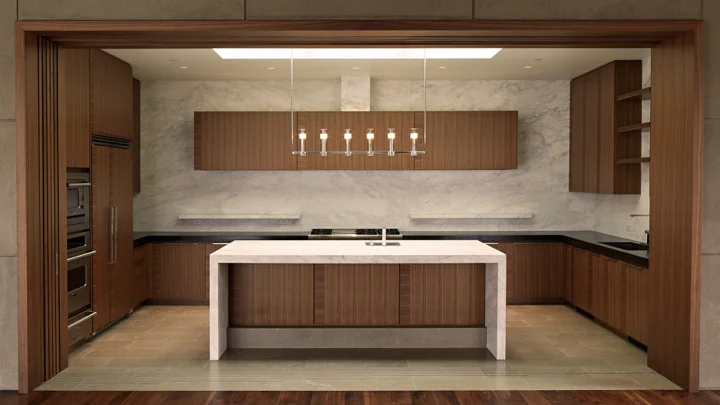How Design Icon Paul Wiseman Uses Technology to Design For Silicon Valley’s Top Innovators
In October, I had the pleasure to speak at the annual Design Leadership Network Summit hosted here in San Francisco. The condensed two-day program focused on design, innovation, and technology. Being positioned in the Bay Area, I have worked with many Silicon Valley clients over my 37 years in business. These included venture capitalists, investment bankers, tech CEOs; brilliant, creative people who pioneered innovation and technology. Designing their homes, I learned how to talk to them about interior design in a way that related to their world. And in learning to speak their language, they taught me how to incorporate technology tools into The Wiseman Group. I shared these insights with the Summit audience that morning.
One of my most enjoyable tech collaborations was with client Gordon Moore, co-founder of Intel and the author of Moore’s Law. We were working on his retirement home; it was a four-year project. At the beginning of the project, he was reticent, observing the selections I brought him each meeting without commenting. And then one day during a presentation he began speaking up, voicing an opinion. His choices were the best I had ever seen a client make to date. Gordon explained he figured out an algorithm for my process and that’s how he was able to connect the dots of design.
Another fantastic tech client I've worked with is Marc Benioff, the founder of Salesforce. It has been an inspiring collaboration over the years, both on a personal and a professional level. I admire how he is changing the way the corporate world operates by promoting camaraderie, employee wellness, and fun in a sustainable workspace. Dedicated meditation rooms and lifestyle areas in Salesforce’s San Francisco headquarters give the staff a place to reflect and recharge. The CEO also believes in philanthropy, and each employee donates their time or money to the community. Marc is all about energy, flow, and curve concepts we can integrate into the design world.
To work with the best in tech, I’ve outlined what I consider a designer’s must-haves in their tech toolkit:
The iPhone: I attended the Tucson Gem & Mineral Show and found an 80-million-year-old specimen that I knew would be perfect for a client’s house. I took a picture using my phone and sent it to him, and got an immediate reply “buy it!” It was at that moment I realized this iPhone is a pretty handy design tool.
Hand-drawn and Computer Renderings: I am still a big fan of hand drawings and watercolors. They capture the nuanced aesthetics of design. It is a mystical concept; subjective but not functional. While hand renderings sell the spirit of a room to the client, they cannot be used to build it. Then came the capacity to merge architectural plans with technology platforms. Programs like Sketchup allowed the designer to layout scaled models showing space and form. The format was exact and objective but did not engage the viewer emotionally in the way hand renderings do.
Photo Realistic Renderings: Photo-realistic renderings have created the ability to fuse the artistry of hand-renderings with the precision of technical drawings. We can show our clients an image of what their space could look and feel like before production begins.
The Wiseman Group uses this photo-realistic rendering to interface with clients in either remote locations or where privacy is the foremost concern. For a Los Angeles project, we designed the entire home with the architect using this technology before we broke ground for the client.
3D Printing: One of my favorite technological advancements in design has been 3D printing. It has sped up the custom design process and made it more cost efficient. Our clients want furnishings accurately produced the first time. 3D technology allows for straightforward communication of intricate designs in a very specific way. We have designed and 3D modeled furniture frames that our upholsterer can then build showing the complex curves and proportions. The Wiseman Group provides unique custom hardware and furnishings for clients at the price of standard showroom goods.
Virtual Reality: Virtual reality empowers our clients to “walk-through” and experience different design options before committing to them. While guiding clients through the 3D models of VR, we can collaborate on paint color, finish details and interior architecture. The immersive environment mimicking a real space adds to the clarity of the design decisions. Our clients feel confident that the selections they are making are the ones that resonate with them the most.
The convergence of technology + design has resulted in dynamic collaborations. Both disciplines enable us to communicate who we are to the outside world. On a technology front, we use the tools to express ourselves professionally and personally. On a design level, we strive for the same self-expression in the interiors of our homes and workspaces. Ultimately they both seek to meet the same end goals.
Click on the video to watch highlights from Design Leadership Summit.


